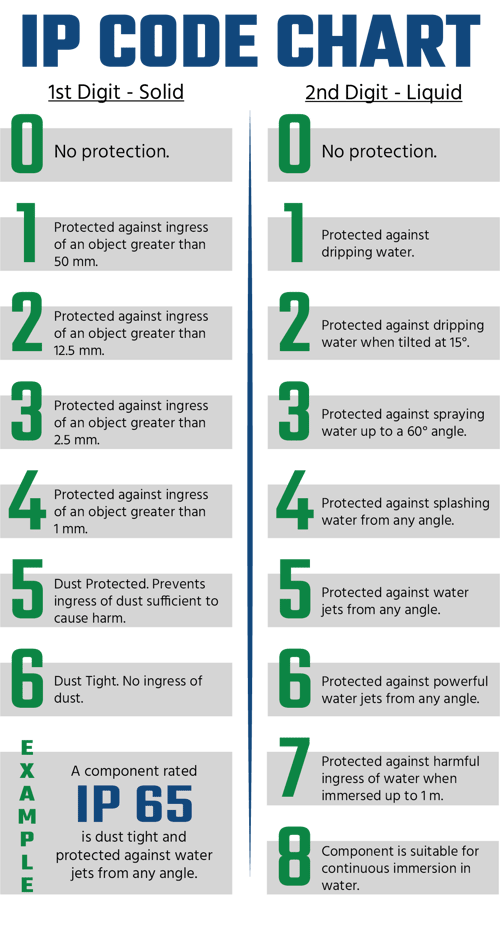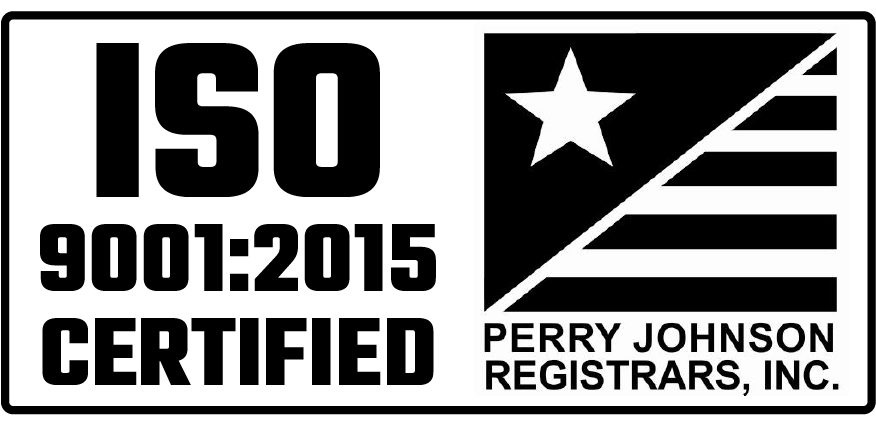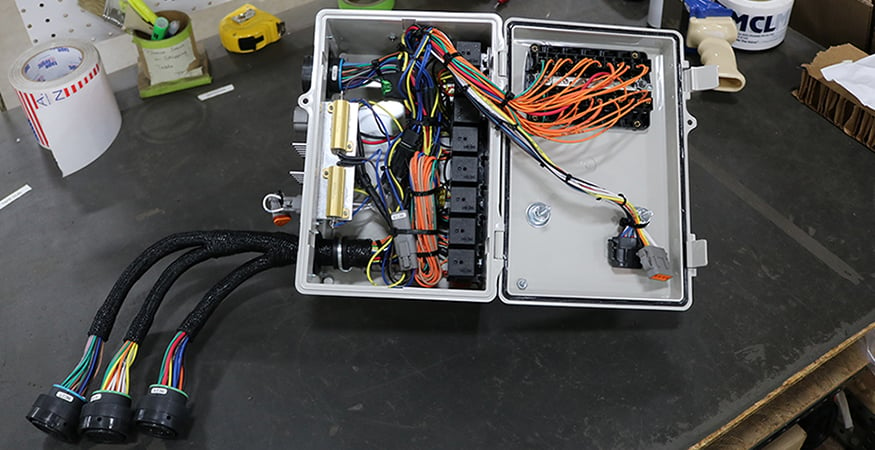We all know that water and electricity don’t mix. But it’s common for heavy equipment to be used in environments where water is present. So how can an OEM protect its equipment’s electrical assemblies from water ingress? And what happens if the electrical components aren’t protected properly from moisture? The answers to both of those questions depend on several factors.
When Water Meets Electrical Assemblies
If water meets unprotected electrical assemblies, the consequences can be costly or even deadly. Electrical shorts can cause the equipment to malfunction or, worse, it may not work at all. Water ingress can also lead to fire and shock hazards, which can severely injure or kill workers in a high voltage application.
No matter how significant the damage is, the costs to repair the equipment and any damage done can climb quickly. Even if no actual lasting damage occurs, the repairs will lead to downtime and project delays. If someone gets injured or the incident causes property damage, the OEM could face litigation and fines.
Steps to Prevent Water Ingress
The first step to protect electrical assemblies from water ingress is to understand what types of working environments the assembly will be used in. That way you can use appropriately rated components in the design.
Will the assembly get rained on, or will it be submerged while in operation? Different environments require varied levels of protection, which is where IP Codes come into play. The IP Code is a two-digit number that indicates how resistant components are to intrusion by solid particles and liquids. The chart below is a helpful guide to ensure your engineering team uses IP-rated components that meet or exceed the requirements of the working environment:

Tools and Tips to Prevent Water Ingress
- Overmolding is an excellent way to protect small electrical components like printed circuit boards, resistors, capacitors, and diodes.
- Gaskets can be used to seal the junction where multiple surfaces meet; they’re typically used to help make something that wasn’t designed to be watertight usable in a wet environment.
- RTV silicone can also be used as a seal; it’s better for small volumes because quality can be difficult to repeat. It requires application by an experienced technician and time to cure.
- Cord grips and sealed connectors can protect electrical enclosures from water ingress.
- On an enclosure, install the hinges outside of the gasket to prevent compromising the gasket’s integrity.
- Use braided loom on wire harnesses to allow liquids to flow through instead of getting trapped inside conduit.
- If you need to use a conduit, leave a small gap between the conduit and the connectors to allow liquids to escape.
Preventing water ingress on electrical assemblies begins with knowing where and how the assembly will be used. Once that is determined, use properly rated components to protect the electrical assembly from any water that may be in its working environment.
It’s also important to call out how watertight the assembly needs to be on the drawing so that any supplier who receives the design understands why you’ve chosen the components on the bill of materials (BOM). For example, a welder working on a custom enclosure for an electrical assembly that is headed to a wet environment will need to know if the weld needs to be watertight.
If you’re working on the design for an electrical assembly, check out our Wire Harness Design Checklist to guide you. Click the button below to download your copy.





